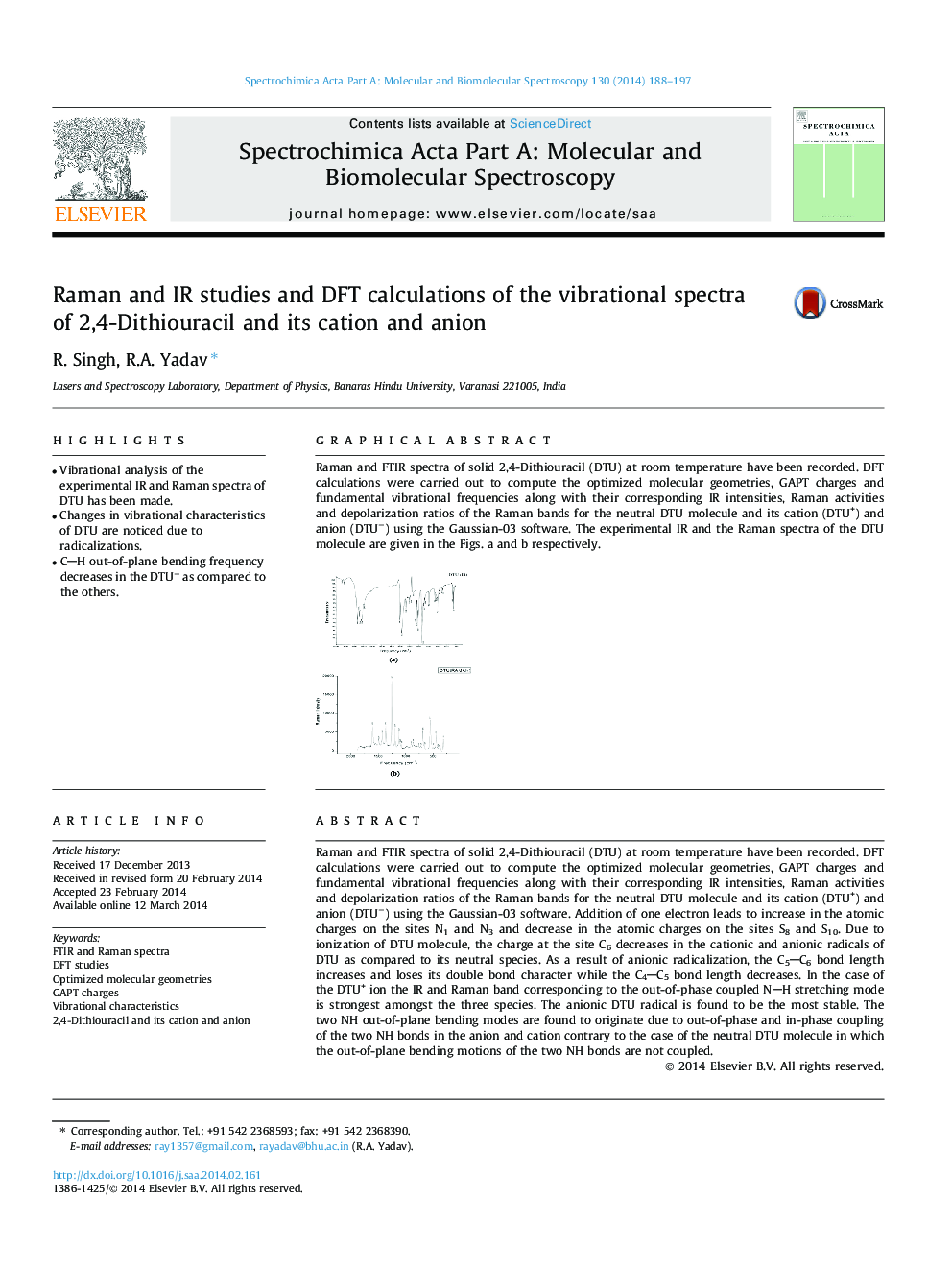| Article ID | Journal | Published Year | Pages | File Type |
|---|---|---|---|---|
| 1230341 | Spectrochimica Acta Part A: Molecular and Biomolecular Spectroscopy | 2014 | 10 Pages |
•Vibrational analysis of the experimental IR and Raman spectra of DTU has been made.•Changes in vibrational characteristics of DTU are noticed due to radicalizations.•CH out-of-plane bending frequency decreases in the DTU− as compared to the others.
Raman and FTIR spectra of solid 2,4-Dithiouracil (DTU) at room temperature have been recorded. DFT calculations were carried out to compute the optimized molecular geometries, GAPT charges and fundamental vibrational frequencies along with their corresponding IR intensities, Raman activities and depolarization ratios of the Raman bands for the neutral DTU molecule and its cation (DTU+) and anion (DTU−) using the Gaussian-03 software. Addition of one electron leads to increase in the atomic charges on the sites N1 and N3 and decrease in the atomic charges on the sites S8 and S10. Due to ionization of DTU molecule, the charge at the site C6 decreases in the cationic and anionic radicals of DTU as compared to its neutral species. As a result of anionic radicalization, the C5C6 bond length increases and loses its double bond character while the C4C5 bond length decreases. In the case of the DTU+ ion the IR and Raman band corresponding to the out-of-phase coupled NH stretching mode is strongest amongst the three species. The anionic DTU radical is found to be the most stable. The two NH out-of-plane bending modes are found to originate due to out-of-phase and in-phase coupling of the two NH bonds in the anion and cation contrary to the case of the neutral DTU molecule in which the out-of-plane bending motions of the two NH bonds are not coupled.
Graphical abstractRaman and FTIR spectra of solid 2,4-Dithiouracil (DTU) at room temperature have been recorded. DFT calculations were carried out to compute the optimized molecular geometries, GAPT charges and fundamental vibrational frequencies along with their corresponding IR intensities, Raman activities and depolarization ratios of the Raman bands for the neutral DTU molecule and its cation (DTU+) and anion (DTU−) using the Gaussian-03 software. The experimental IR and the Raman spectra of the DTU molecule are given in the Figs. a and b respectively.Figure optionsDownload full-size imageDownload as PowerPoint slide
